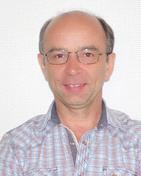报告时间:2022年11月24日、12月1日、12月20日(15:00-16:00)
报告地点:腾讯会议(Tencent Meeting)
会议ID:785 185 364(11.24);711 517 391(12.1);753 467 960(12.20)
报告人: Gilbert Teyssèdre
工作单位:法国国家科学研究中心(CNRS)
举办单位:24848威尼斯
报告人简介:

Gilbert Teyssèdre, born in 1966, received his Engineer degree in materials physics and graduated in solid state physics in 1989 at the INSA, Toulouse, France. Then he joined the Solid State Physics Lab in Toulouse and obtained the Ph.D. degree from Paul Sabatier University in 1993 for work on ferroelectric polymers. His research activities concern the development of luminescence techniques in insulating polymers with focus on chemical and physical structure, degradation phenomena, space charge and transport properties. He is currently Senior Researcher at CNRS. He has been head of the Solid Dielectrics and Reliability group at Laplace from 2004 to 2015. He has held numerous governmental and industrial research grants in the field of electrical insulation and has co-authored over 160 contributions to scientific journals and book chapters and 230 conference proceedings. He is member of the scientific committee of several conference series as CEIDP since 2016, ICD, ICEMPE, and JiCable. He is Associate Editor of IEEE Trans. Dielectr. Electr. Insul (2021-).
报告简介:
(11.24)This course deals with the various technical needs of isolation in electrical engineering, ranging from outdoor insulation to power modules: how the needs evolved in time and how the solutions have evolved. The applications being targeted and the specific stresses encountered will be reviewed. We show how polymeric and composite insulations have gained more and more space. In a second part, thermal and structural properties of these materials, and the ways to probe these are addressed. The course is typically suited to researchers in electrical engineering having limited knowledge about insulating materials.
(12.1)According to the applications, insulations in power engineering systems are submitted to different stress waveforms, and the key properties differ according to the application field (energy storage, encapsulation, cable insulation, etc.). Design considerations for example and properties of interest are not the same for AC and DC stresses. Underlying physical processes for these properties are treated: For AC, it concerns polarization phenomena and losses, and the relation between time-domain and frequency-domain response. For DC, conduction phenomena will be addressed as well as non-linear phenomena. Finally, the reasons for non-linear effects will be treated with dealing with interface processes, trapping and space charge phenomena. Mainly the response from polymers will be illustrated, particularly with HV cable application with consideration of the difference between AC and DC stress. The question of failure modes is addressed in a different presentation.
(12.20)Compared to inorganics, polymeric insulations are relatively sensible to thermal stresses, both from physical and chemical standpoints. On the other they tend to have better field strength. In this presentation, the various modes of degradation and failure in insulations will be presented. The mechanisms of breakdown along with the different stages of ageing will be introduced. Early phenomena at the origin of ageing will be discussed. The manifestation of degradation through partial discharge activity and treeing phenomena will be illustrated.
文 赵玉顺 审核 孙伟


